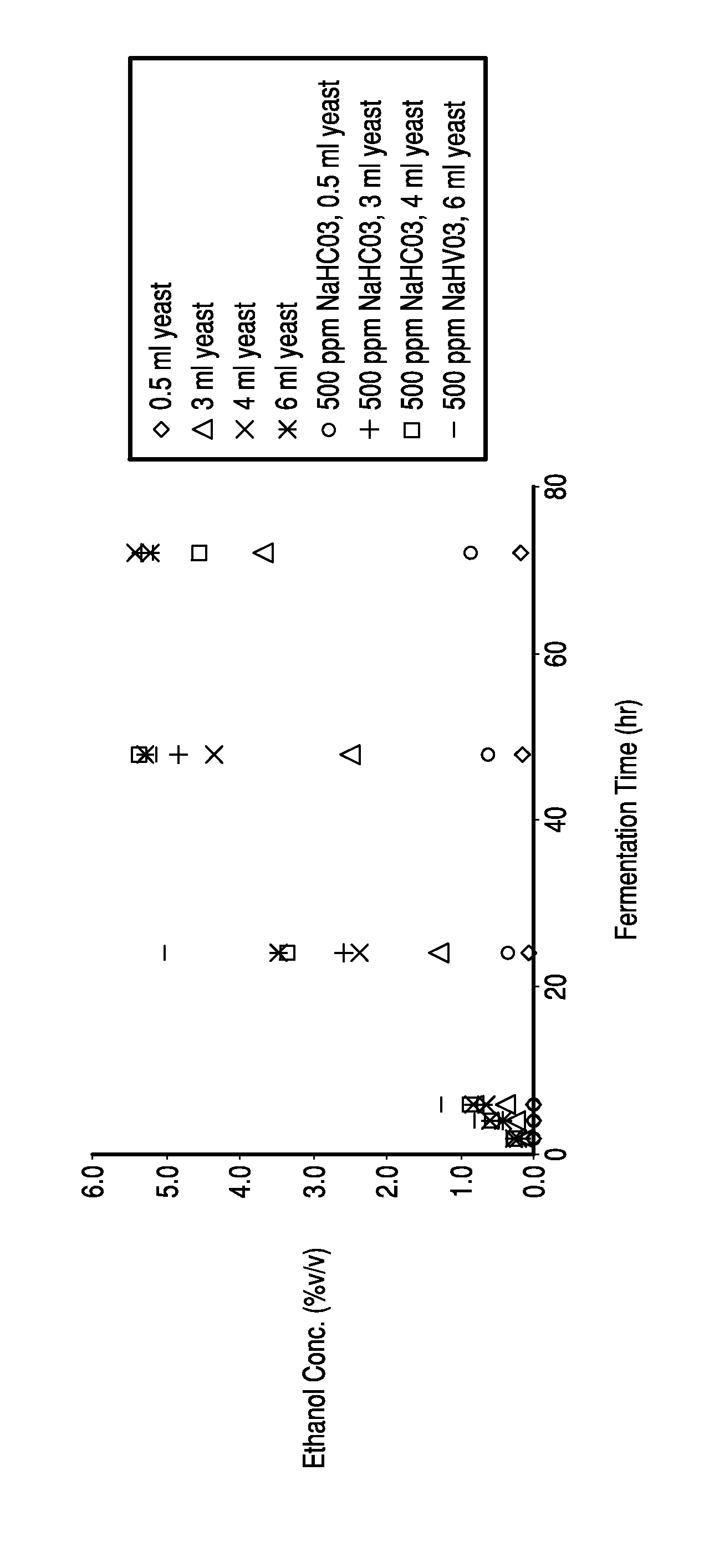Glucose conversion to ethanol via yeast cultures and bicarbonate ions
a technology of ethanol and bicarbonate, which is applied in the direction of biofuels, microorganisms, biochemical apparatus and processes, etc., can solve the problems of low energy requirements, low ethanol concentration, and high cellulose content of biomass, so as to reduce the dependence of national authorities, reduce air emissions, and improve engine performan
- Summary
- Abstract
- Description
- Claims
- Application Information
AI Technical Summary
Benefits of technology
Problems solved by technology
Method used
Image
Examples
example
Experimental Protocol:
[0040]Various concentrations of yeast were added to glucose based liquid media with and without NaHCO3 and the fermentation process monitored for glucose consumption and ethanol production.
[0041]The fermentation media consisted of 25 gm of glucose and 1 ml of urea (45%) in 250 ml of water. The pH of the system was adjusted to 4.5 with 1 M H2SO4. The temperature of incubation was about 32° C., and the tests were conducted for 72 hours. The tests compared fermentation systems with and without sodium bicarbonate (NaHCO3). NaHCO3 was added to final concentrations of 200 ppm or 500 ppm in the test vessels. The pH after NaHCO3 addition was about 7.5. In some vessels the pH was readjusted to 4.5. Yeasts (Saccharomyces cerevisiae (Ethanol Red) diluted 1 to 5 in water, were added to the various test vessels at 0.5, 2, 3, 4 and 5 ml. Yeasts at 3 ml in the vessel corresponds to 2.4 g / L. The fermentation media vessels were monitored for glucose utilization and ethanol prod...
PUM
 Login to View More
Login to View More Abstract
Description
Claims
Application Information
 Login to View More
Login to View More - R&D
- Intellectual Property
- Life Sciences
- Materials
- Tech Scout
- Unparalleled Data Quality
- Higher Quality Content
- 60% Fewer Hallucinations
Browse by: Latest US Patents, China's latest patents, Technical Efficacy Thesaurus, Application Domain, Technology Topic, Popular Technical Reports.
© 2025 PatSnap. All rights reserved.Legal|Privacy policy|Modern Slavery Act Transparency Statement|Sitemap|About US| Contact US: help@patsnap.com

